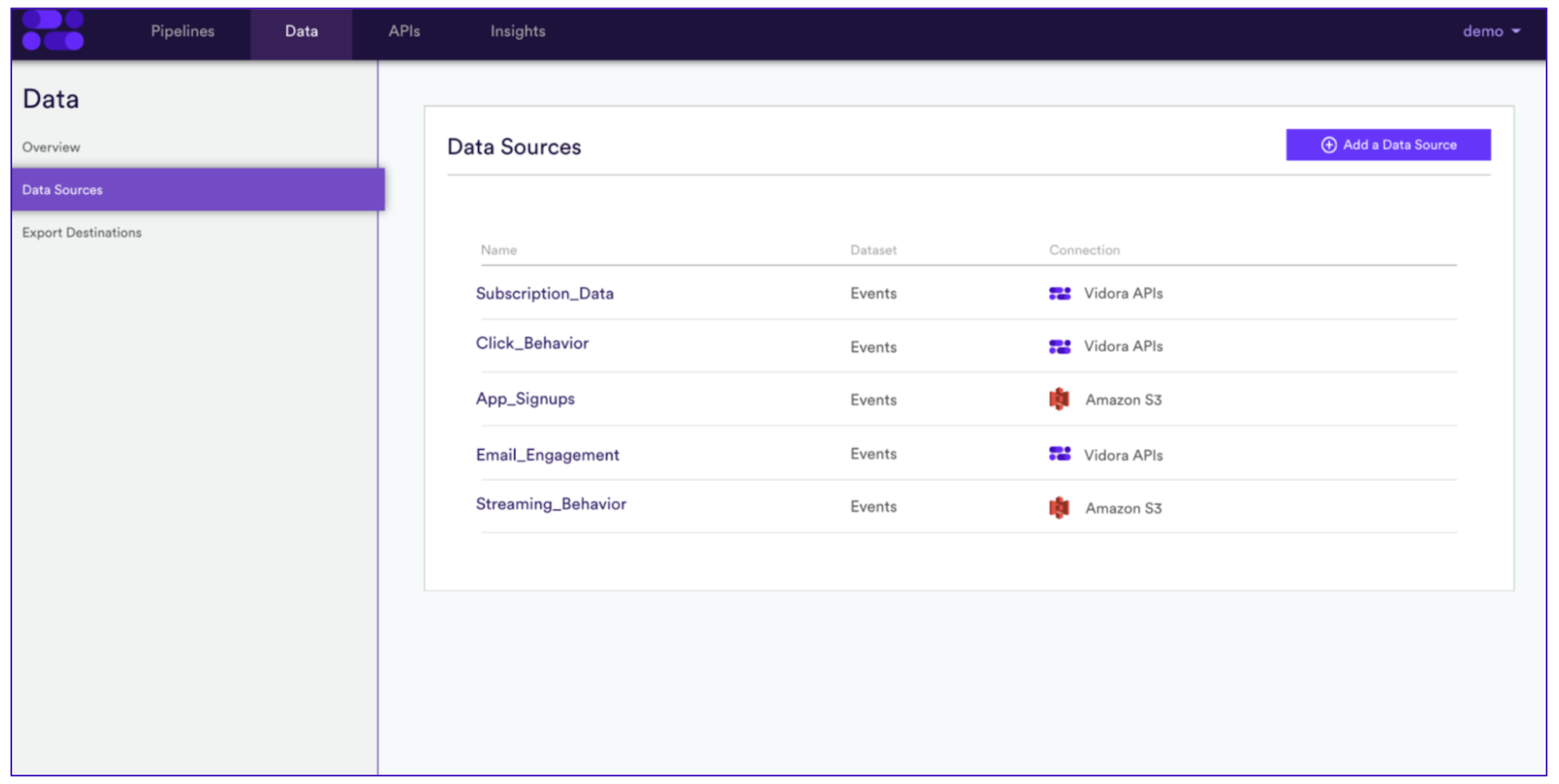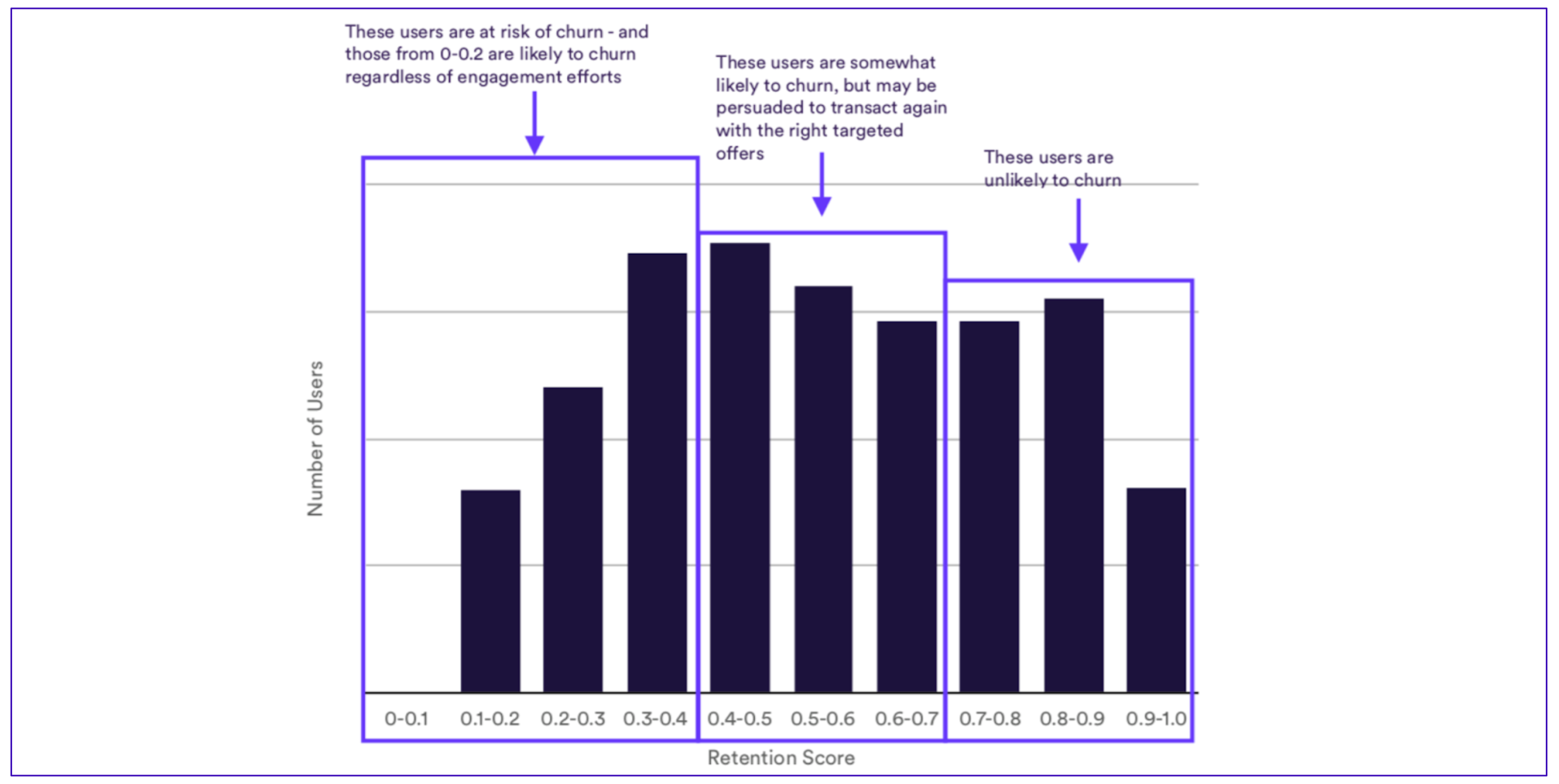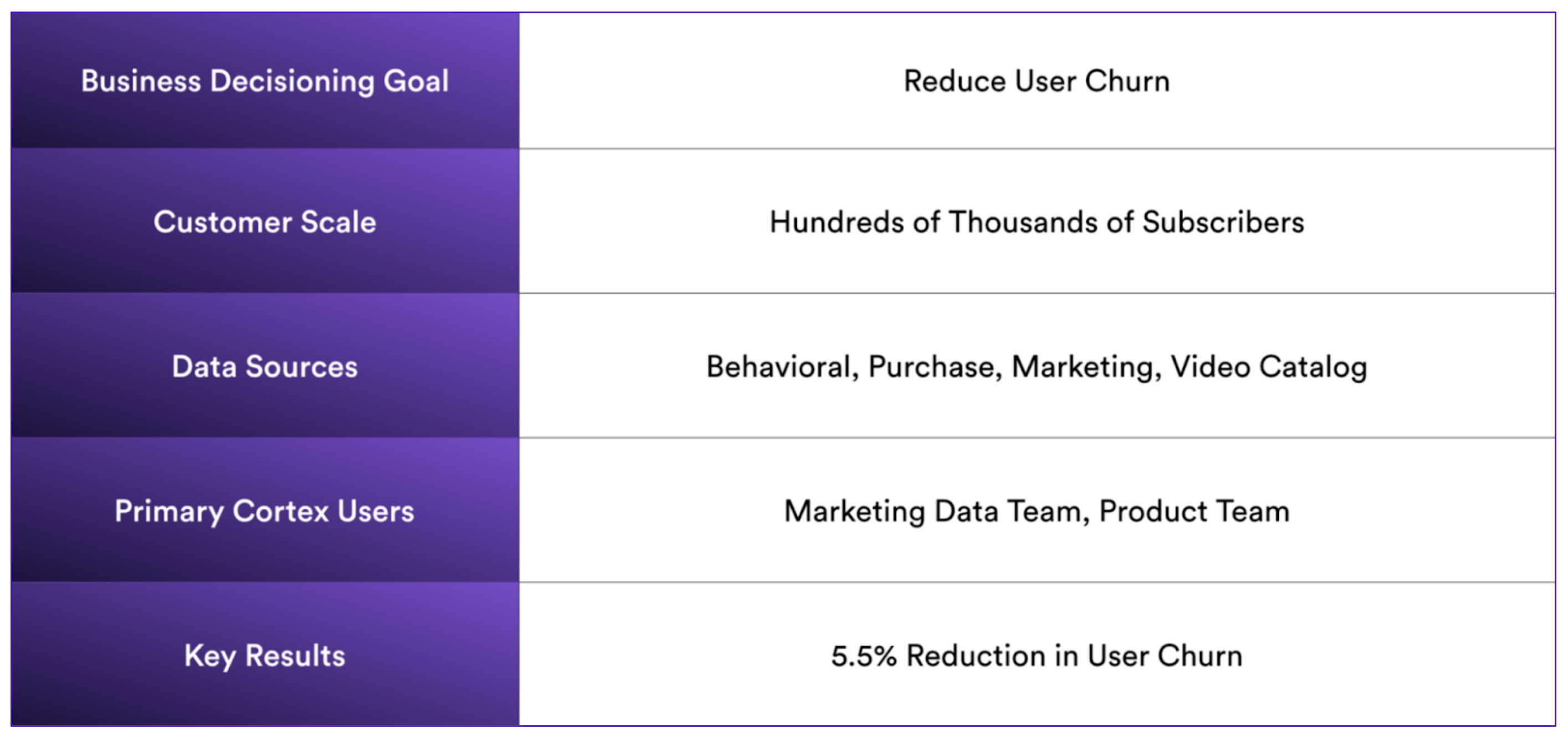The Results:
Reduction in User Churn

Reduction in User Churn
The Subscription Video On Demand (SVOD) ecosystem is increasingly competitive as brands vie for the new revenue streams resulting from consumers moving from linear to online channels. The increased competition is focusing the attention of executives on key business metrics which drive their underlying business. SVOD companies are typically focused on two key metrics, the cost of user acquisition and reducing user churn (which impacts CLV).
One of the largest SVOD companies leveraged Cortex to both predict and reduce user churn. User churn was identified by their management team as the most important company metric to impact in the short term. In this case study, we will demonstrate how Vidora helped the SVOD service not only identify who would churn, but also develop proactive prescriptive strategies to reduce churn. Business decisioning, powered by machine learning, provided a strong technology framework to substantially decrease user churn.
A key goal for the SVOD service is to identify users who are likely to unsubscribe and engage those users proactively to reduce churn. To retain existing subscribers, the SVOD business had a series of ‘win-back’ email campaigns for at-risk users. A significant challenge for the SVOD service was to translate raw behavioral, attribute, and catalog data into business decisions which not only identified users likely to churn, but also prevented those users from churning. In particular, the SVOD service focused on machine learning powered decisioning which provided information on which users to engage with the win-back campaigns and which campaigns to engage those users in order to reduce churn.
The SVOD service had a variety of data sources which they leveraged in Cortex including:
All of these data sources were provided to Cortex through the data sources interface.

The SVOD service sent a continuous stream of data across a variety of sources into Cortex. Cortex not only processed that data at large scale, but also allowed the SVOD service to monitor key aspects of the ingestion to ensure all the data was being prosperity received. This monitoring included visualizing the total number of users over time, the content catalog being ingested, and the number of behavioral events ingested over time.
The SVOD service built pipelines in Cortex to predict which subscribed users were most likely to churn in the next 30 days. The machine learning performance of these models was validated by running models on past time periods to ensure the models were able to accommodate cyclical changes in user behavior (i.e. changes which happen during the holiday season for instance). Cortex provides the ability to train on past time-periods natively within the product. Once the models were deemed to perform well in predicting user churn, the next task was to leverage a more prescriptive approach to reduce user churn.
There were numerous challenges inherent in predicting user churn which the SVOD team was able to solve using Cortex. However, the main remit of the team was to reduce user churn. In order to actively reduce user churn, the SVOD team needed to translate the predictions into prescriptive business decisions.
Using Cortex, the SVOD team identified cohorts of users who, if engaged through email and push marketing channels with win-back campaigns, would have the largest decrease in churn propensity. These users tended to be in a “danger zone” and were identified as at-risk users.
Typically, these users had an intermediate churn propensity score and often fell within the 40-70% churn likelihood range. The rationale for users in this particular range being at-risk was the following:

Using Cortex, the SVOD team sent the IDs of at-risk users in addition to the appropriate win-back campaign to their CRM by specifying the appropriate destination in Cortex. The CRM was then programmed to continuously engage at-risk users with win-back emails.
The SVOD team tested the impact of machine learning-powered business decisioning on user churn by comparing a treatment group of at-risk users with a group of users who they continued to engage in their standard fashion. After analyzing the results over a 3 month period, the SVOD team noted a 5.5% reduction in overall churn in the treatment group. This reduction in churn had a meaningful impact on their top-line revenue.

User churn and customer acquisition costs are two of the most important metrics for any SVOD business. This SVOD business was able to leverage the full value of their 1st party data assets and transform customer data into machine learning-powered business decisions. Cortex accelerated the time to value dramatically and enabled the team to leverage both predictive and prescriptive techniques to predict and reduce user churn.